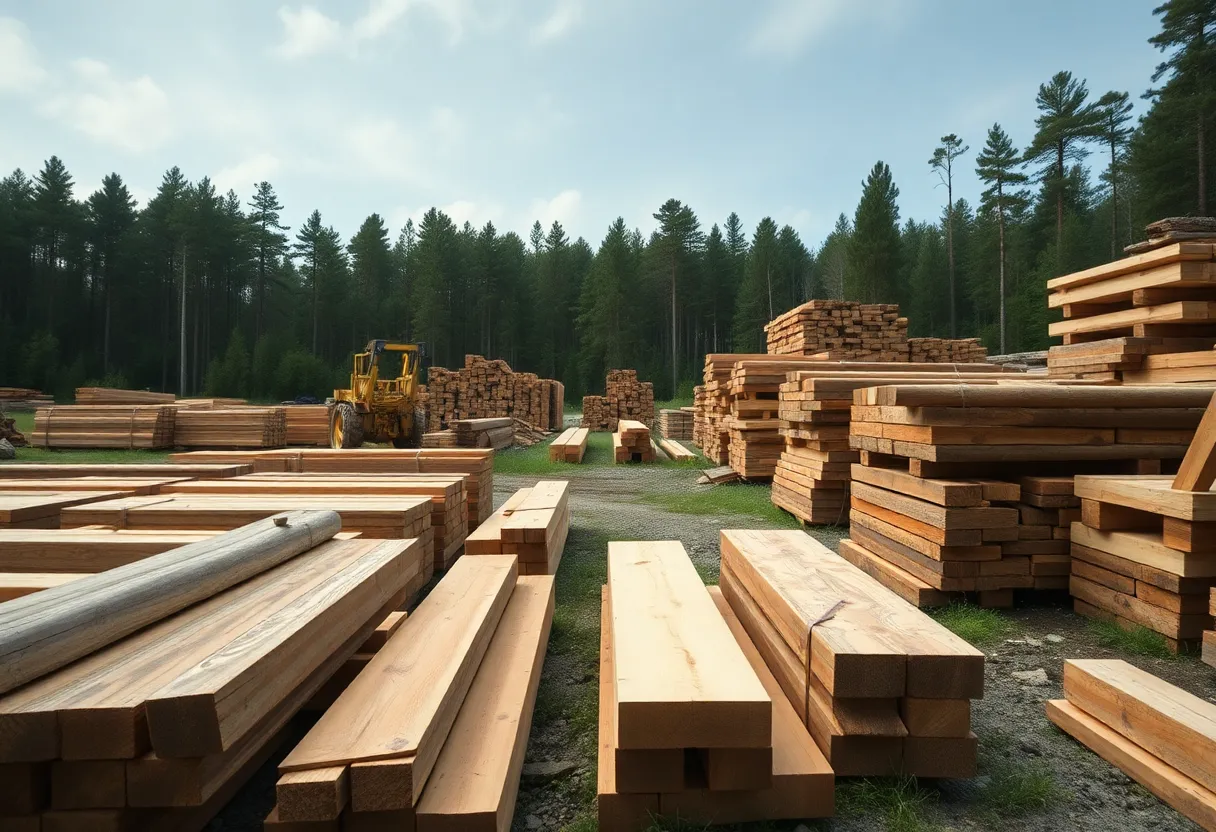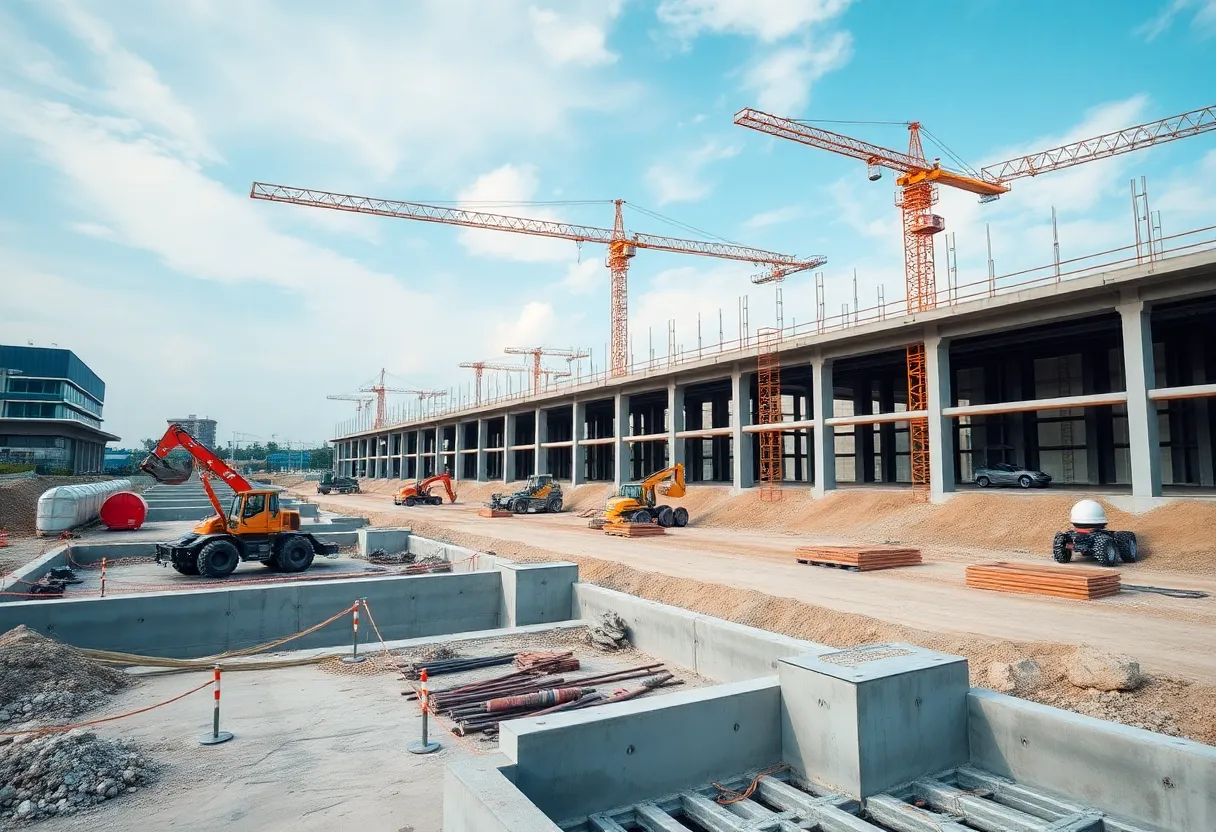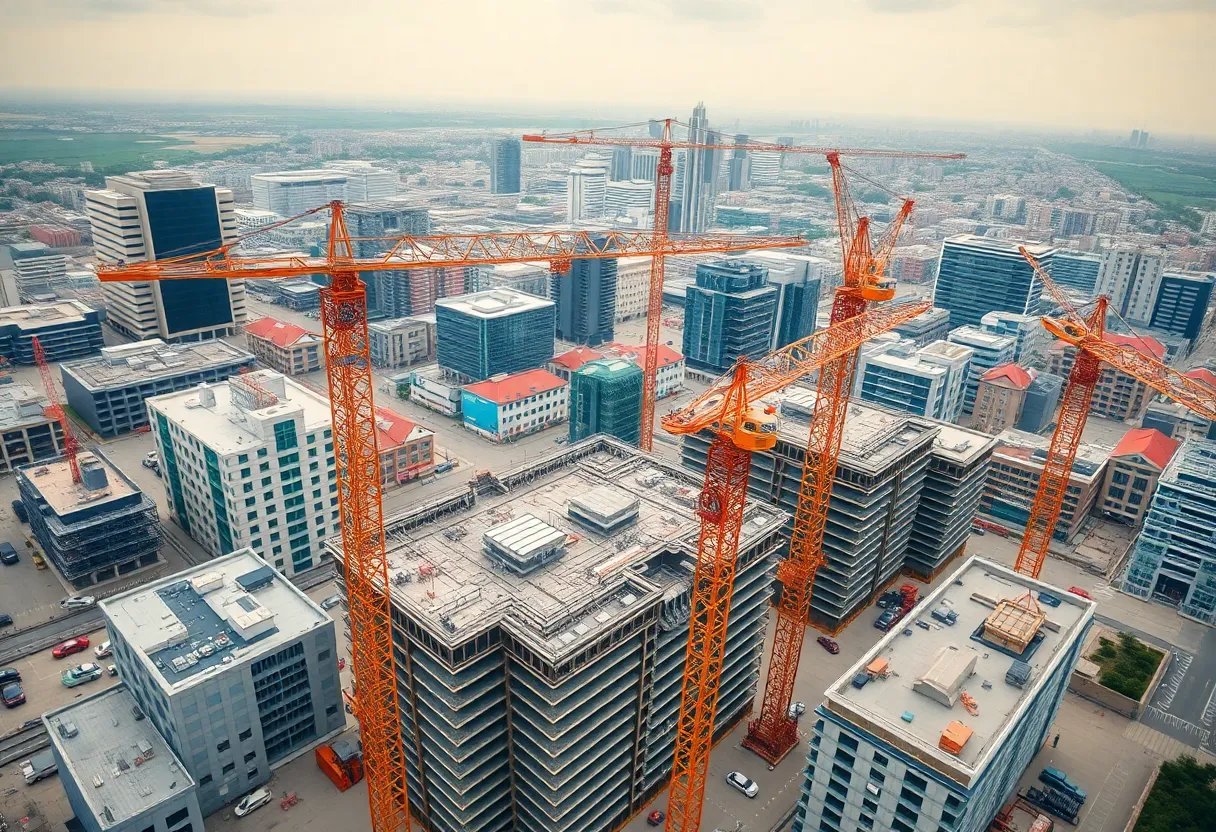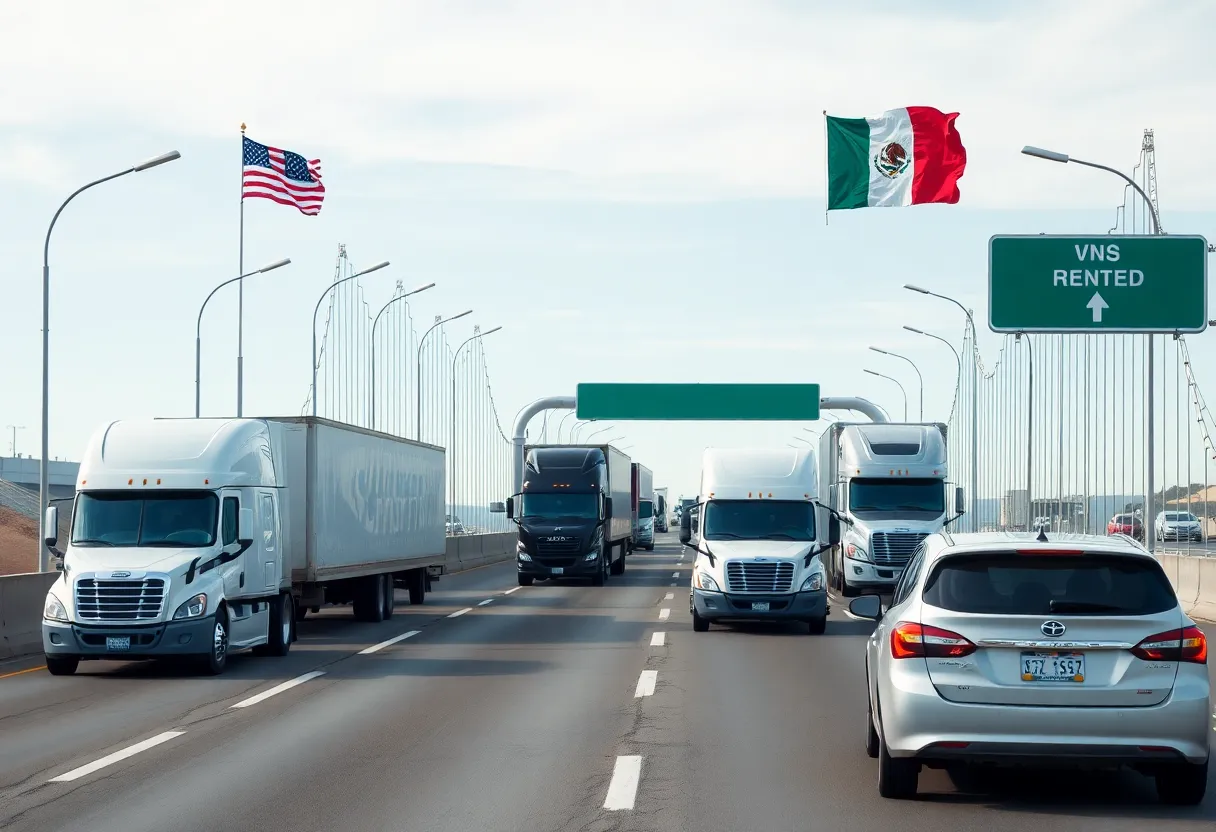News Summary
Rising tariffs on Canadian lumber are causing concern among U.S. forestry producers in the Southeast. States like Georgia and Florida face potential cost increases of up to 20%, which may deter investments and expansion efforts. Legislators advocate for subsidies to support domestic mills and ensure stable pricing, crucial for sustaining the industry and maintaining job opportunities in rural areas. The lumber sector’s significant role, contributing 40% to national production, highlights the need for balanced trade policies to protect local economies.
Atlanta, Georgia: Higher Tariffs on Canadian Lumber Threaten U.S. Forestry Investments in the Southeast
Higher tariffs on Canadian lumber are raising concerns about potential setbacks for investments in U.S. forestry, particularly in the Southeast. Producers in states like Georgia and Florida are hesitant to expand operations without stronger incentives, as the added costs could reach 20%. This issue is drawing attention from industry experts and legislators who advocate for subsidies to support domestic mills and maintain stability in a competitive global market.
The tariffs may increase production expenses, making long-term projects less appealing for foresters. Without adequate support, this could slow down expansion efforts in key areas, affecting job opportunities in rural economies. Southeastern states play a vital role in the national lumber supply, contributing 40% of the country’s lumber. Experts emphasize that stable pricing is essential to keep the sector thriving amid ongoing global challenges.
Legislators are pushing for subsidies aimed at domestic mills to offset the financial strain from these tariffs. This approach could help encourage sustainable practices and foster growth in the region. Industry leaders are seeking bipartisan backing to address these issues and promote responsible harvesting methods, ensuring the long-term health of the forestry sector.
In the Southeast, the lumber industry supports thousands of jobs and contributes significantly to local economies. The potential for higher costs due to tariffs highlights the need for balanced policies that protect domestic producers while maintaining access to affordable materials. This situation underscores the interconnectedness of trade policies and regional economic development.
Background information reveals that the forestry sector in the Southeast has been a cornerstone of the U.S. economy for decades. With states like Georgia and Florida leading production, any disruptions could ripple across the nation. The call for subsidies stems from the understanding that without them, producers might scale back operations, leading to reduced output and economic impacts in rural communities. Stable pricing, as noted by experts, is crucial for competing effectively on the global stage, where other countries offer more favorable conditions.
The push for bipartisan support reflects a broader effort to advance sustainable harvesting practices. These practices not only ensure environmental responsibility but also secure the future of the industry. By addressing the drawbacks of higher tariffs, policymakers aim to create an environment where investments can flourish, benefiting both the economy and the environment.
As discussions continue, the focus remains on finding solutions that mitigate the risks associated with increased tariffs. This could involve a combination of financial incentives and policy adjustments to support the Southeast’s forestry operations.
The full impact of these tariffs is still unfolding, but the immediate effects are already influencing decisions in the region. With the industry’s significant contribution to national lumber production, maintaining momentum is key to avoiding broader economic downturns.
Efforts to promote sustainable practices are gaining traction, as they align with growing demands for environmentally friendly products. This holistic approach could help the Southeast remain a leader in the sector, despite external pressures.
In summary, the potential drawbacks of higher tariffs on Canadian lumber pose a real threat to investments in U.S. forestry, especially in the Southeast. By prioritizing subsidies and stable policies, stakeholders hope to safeguard jobs, support rural economies, and ensure the sector’s sustainability.
Key Impacts of Tariffs on Southeastern Forestry
The following details highlight how tariffs are affecting the region:
– Increased costs: Tariffs could raise expenses by 20%, making expansion projects less viable.
– Southeastern production: These states account for 40% of national lumber, underscoring their importance.
– Job support: The industry bolsters rural economies, and any slowdown could lead to job losses.
– Incentives needed: Subsidies for domestic mills are suggested to counterbalance the effects.
– Global competition: Stable pricing is vital for the sector to compete effectively.
This article provides an overview based on recent developments, emphasizing the need for proactive measures to protect the forestry industry in the Southeast.
(The full article word count: 512)
FAQ Section
What are the potential drawbacks of higher tariffs on Canadian lumber?
These tariffs may hinder investments in U.S. forestry, particularly in the Southeast.
Which regions are most affected by these tariffs?
Producers in Georgia and Florida are skeptical about expanding operations.
How much could costs increase due to the tariffs?
Tariffs could increase costs by 20%, deterring long-term projects.
What solutions are being suggested to address the issue?
Legislators suggest subsidies for domestic mills.
What is the role of Southeastern states in national lumber production?
Southeastern states produce 40% of national lumber, supporting jobs in rural economies.
What is key to sustaining the forestry sector?
Stable pricing is key to sustaining this sector amid global competition.
What are industry leaders advocating for?
Industry leaders are calling for bipartisan support to promote sustainable harvesting practices.
Key Features Chart
| Feature | Description |
|---|---|
| Increased Costs | Tariffs could raise costs by 20%, deterring long-term projects in the Southeast. |
| Production Share | Southeastern states produce 40% of national lumber, supporting rural jobs. |
| Suggested Solutions | Subsidies for domestic mills to encourage investments and expansion. |
| Key to Sustainability | Stable pricing is essential amid global competition. |
| Advocacy Efforts | Bipartisan support for sustainable harvesting practices. |
Deeper Dive: News & Info About This Topic
Construction FL Resources
Chicago Construction Industry Faces Financial Strain Amid Rising Costs
Housing Crisis in Canada and the U.S. Deepens Due to Outdated Systems
Author: Construction FL News
The FLORIDA STAFF WRITER represents the experienced team at constructionflnews.com, your go-to source for actionable local news and information in Florida and beyond. Specializing in "news you can use," we cover essential topics like product reviews for personal and business needs, local business directories, politics, real estate trends, neighborhood insights, and state news affecting the area—with deep expertise drawn from years of dedicated reporting and strong community input, including local press releases and business updates. We deliver top reporting on high-value events such as the Florida Build Expo, major infrastructure projects, and advancements in construction technology showcases. Our coverage extends to key organizations like the Associated Builders and Contractors of Florida and the Florida Home Builders Association, plus leading businesses in construction and legal services that power the local economy such as CMiC Global and Shutts & Bowen LLP. As part of the broader network, including constructioncanews.com, constructionnynews.com, and constructiontxnews.com, we provide comprehensive, credible insights into the dynamic construction landscape across multiple states.





